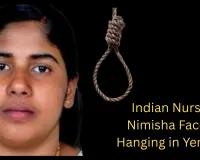Maratha Military Landscapes’ Earns UNESCO World Heritage Tag, Marking India’s 44th Inscription
NEW DELHI

In a proud moment for India, the ‘Maratha Military Landscapes’ have been officially added to the UNESCO World Heritage List, making it the country’s 44th entry. This recognition celebrates a unique system of forts and defense structures developed under Maratha rule between the 17th and 19th centuries. The announcement was made during the 47th session of the World Heritage Committee, currently being held in Paris.
The Culture Ministry noted that the inscription acknowledges India’s rich cultural and architectural history, praising the Maratha forts for their engineering brilliance, historical significance, and contribution to regional identity.
National Leaders Applaud the Recognition
Prime Minister Narendra Modi, Union Culture Minister Gajendra Singh Shekhawat, and Maharashtra Chief Minister Devendra Fadnavis expressed joy over the announcement, calling it a moment of national pride. PM Modi encouraged citizens to explore the 12 historic forts, emphasizing their role in showcasing the resilience and vision of the Maratha Empire. “These sites are symbols of good governance, strength, and cultural pride,” he said on social media.
List of Recognized Sites
The World Heritage tag includes 12 key forts: Salher, Shivneri, Lohgad, Khanderi, Raigad, Rajgad, Pratapgad, Suvarnadurg, Panhala, Vijaydurg, and Sindhudurg in Maharashtra, along with Gingee Fort in Tamil Nadu. These forts span varied geographical regions and illustrate the Maratha dynasty's strategic prowess.
According to officials, there are over 390 forts in Maharashtra, but only 12 were selected based on their military architecture and historical relevance. Eight of these are protected by the Archaeological Survey of India (ASI).
Chhatrapati Shivaji Maharaj’s Legacy
The origins of the Maratha military network date back to the reign of Chhatrapati Shivaji Maharaj in the 17th century. His innovative strategies and fort-building efforts continued through the Peshwa period until 1818. These forts were not just military outposts but symbols of "Swarajya" or self-rule, aimed at establishing a sovereign Maratha state.
Chief Minister Fadnavis called the recognition a “glorious moment” and offered tributes to Shivaji Maharaj. He also credited several officials and diplomats who worked tirelessly for the nomination, including India's Ambassador to UNESCO Vishal Sharma and technical teams from the Directorate of Archaeology and Museums.
Behind the Inscription
The nomination for the 2024–25 cycle underwent a rigorous 18-month evaluation, including technical reviews and an on-ground assessment by the International Council on Monuments and Sites (ICOMOS). The proposal was submitted in January 2024 and received the final nod during the Paris session.
Union Minister Shekhawat called it a “truly proud day” for Indian heritage, stating that these forts represent the genius of indigenous military design and harmonious integration with the environment. External Affairs Minister S. Jaishankar also welcomed the development, saying the forts reflect India’s complex defense systems and civilizational depth.
Global Additions and India’s Standing
Alongside the Maratha forts, eight other sites from countries including Australia, China, Cambodia, and Iran were also granted World Heritage status during the session. India currently holds the sixth-highest number of World Heritage Sites globally and ranks second in the Asia-Pacific region.
As of now, India has 62 properties on UNESCO’s Tentative List — a required step before final nomination. Each year, only one site per country can be submitted for World Heritage consideration.
Last year, the Moidams of the Ahom dynasty in Assam were the latest Indian entry before the Maratha forts, gaining recognition during the 46th session hosted in New Delhi.
With this latest accolade, the forts of the Maratha Empire join the ranks of globally significant heritage sites, shining a spotlight on India’s extraordinary legacy of resistance, strategy, and architecture.


.png)
.png)




1.png)
2.png)
1.png)
1.png)
